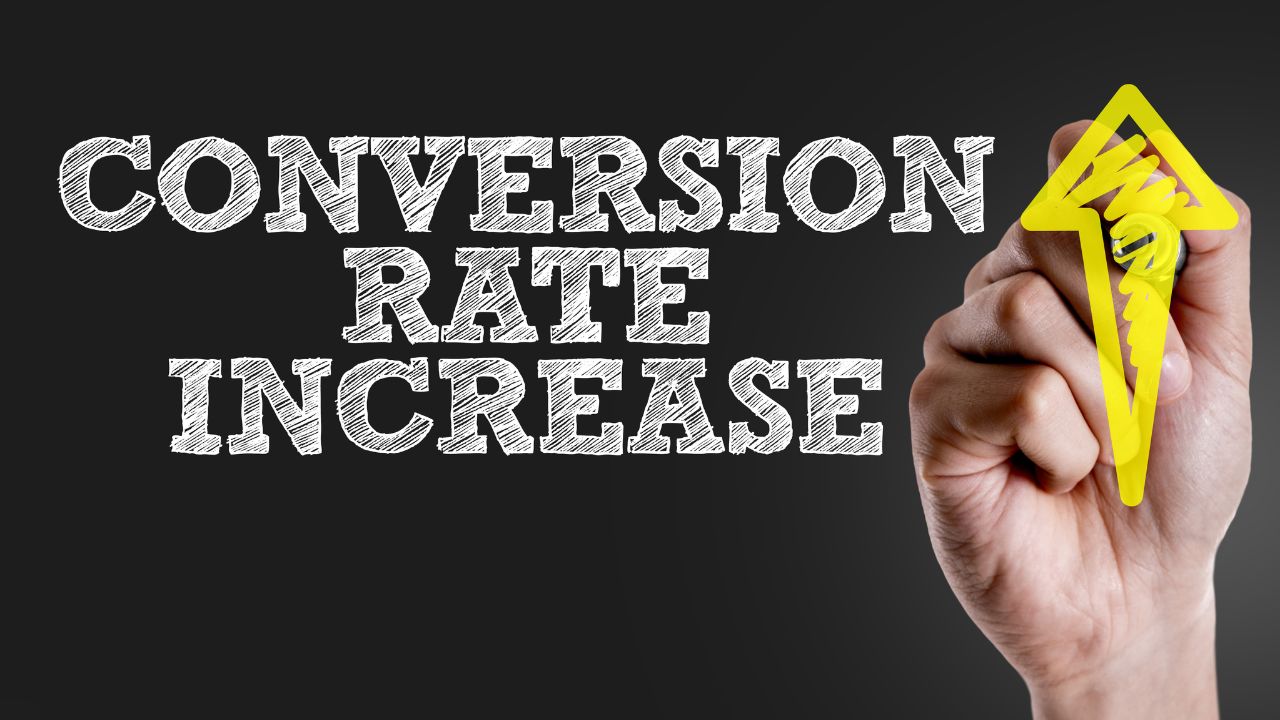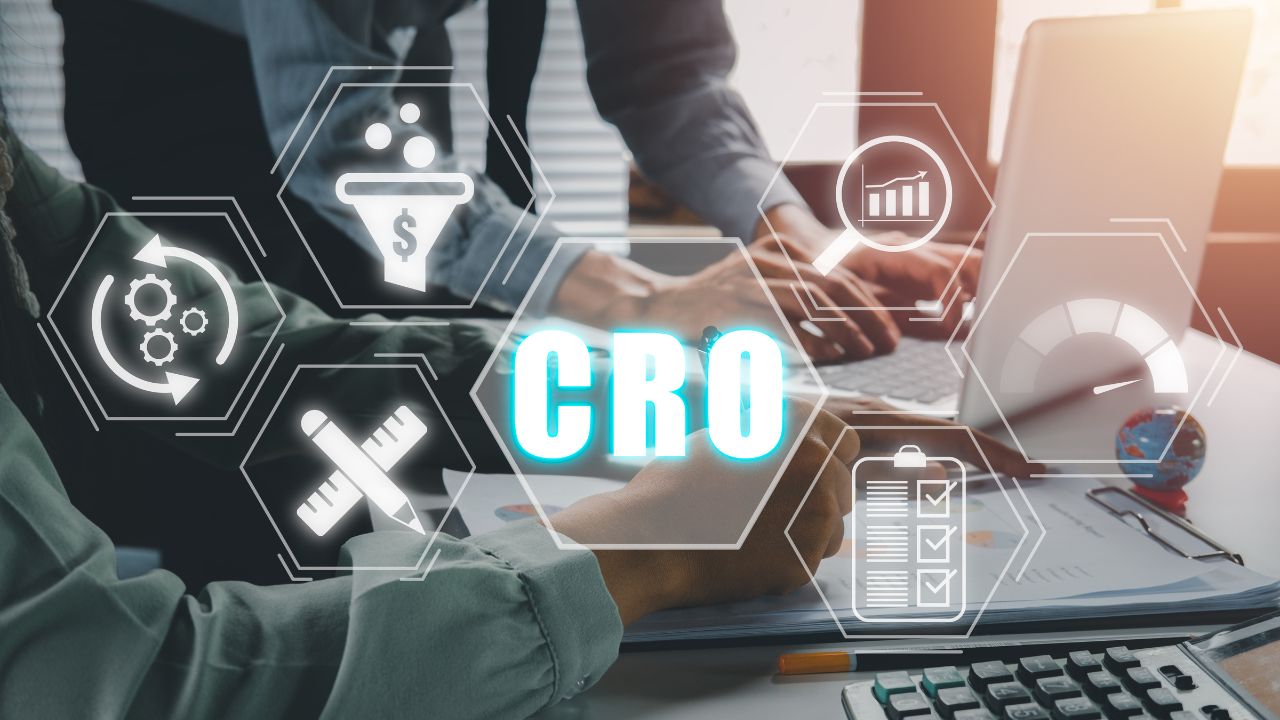Increase Your Sales with Conversion Rate Optimization For E-Commerce
If you’re running an online store, you know just how critical it is to have a steady flow of customers coming in to make purchases. That’s where conversion rate optimization (CRO) for e-commerce comes in, helping turn those casual browsers into buyers, ultimately boosting your bottom line.
E-commerce CRO is all about identifying the pain points in the customer journey, from that first click on your website to a successful purchase.
This could be a confusing checkout process or product pages lacking clear images. Even seemingly small details can trip people up along the way.
Table Of Contents:
- Understanding Conversion Rates in Ecommerce
- Understanding User Behavior with UX Tools
- Boosting Your Ecommerce Conversion Rates: 9 Practical Tactics
- 1. Craft User-Centric Website Navigation
- 2. High-Quality Images and Product Videos for Ecommerce Conversion
- 3. Optimize for Mobile: Ecommerce CRO
- 4. Simplify the Checkout Process for a Better Ecommerce Conversion Rate
- 5. Free Shipping Enticement
- 6. Use Popups Wisely in Ecommerce
- 7. Reviews and Social Proof
- 8. Personalize Ecommerce Customer Experiences
- 9. Analyze Data and Embrace Ecommerce A/B Testing
- FAQs about Ecommerce Conversion Rate Optimization
- Conclusion
Understanding Conversion Rates in E-commerce

Conversion rate in e-commerce is a key metric, representing the percentage of visitors to your site who actually make a purchase.
Let’s say you get 1,000 people browsing through your online shop. If 20 of them buy something, that’s a 2% conversion rate.
Your goal, of course, is to push this number higher, enticing more shoppers to click that “buy now” button.
Why is CRO important for e-commerce websites?
With more people turning to online shopping, having a solid conversion rate optimization ecommerce strategy in place is crucial for e-commerce success.
CRO doesn’t just mean more sales; it impacts your entire online business.
A solid CRO strategy helps attract new customers and gain their loyalty, which can bring in significant revenue.
And this year, amidst challenging market conditions where marketing budgets are getting squeezed, optimizing every customer touch point on your website is even more crucial.
Did you know that, according to data, the global average conversion rate for ecommerce websites is about 3.65%?
Think about how much potential revenue you might be missing out on if your conversion rate falls short of that benchmark.
Key Components of E-commerce Conversion Rate Optimization

Optimizing for conversion isn’t a single magic trick. It’s about paying attention to every detail that shapes a shopper’s experience.
Three crucial components play a role here: drivers, barriers, and hooks.
1. Drivers:
Think about all the elements that encourage your customers to shop on your website – these are the driving forces behind their decisions.
Maybe you’re known for exceptional customer service, top-notch website design, or clear and enticing product descriptions.
It could be your really good content that helps shoppers understand the value of your product.
The easier you make it to navigate and buy things, the smoother the user experience will be for e-commerce shoppers.
2. Barriers:
It’s super important to recognize potential hurdles and bumps that prevent customers from completing purchases.
If your site navigation is unclear or complicated to understand, it will likely drive people away.
Or maybe the checkout process is too long, asking for unnecessary information, and causing frustration.
Don’t forget to address concerns about security and shipping – these can also cause someone to hesitate and think twice before buying.
3. Hooks:
Every ecommerce site has its unique offerings and incentives that convince shoppers to take that final leap.
They become what we can think of as a persuasive call-to-action – a great offer that seals the deal.
Hooks entice potential customers to become paying customers.
Consider these possibilities: limited-time discounts that make products feel exclusive, reward points programs that encourage return visits, or free shipping deals that seal the deal.
Understanding User Behavior with UX Tools
As we dive deeper into e-commerce CRO, one of the smartest tools at our disposal is an understanding of user behavior.
Think of Hotjar, which is really popular for gathering website data about how your visitors behave.
Seeing things from their perspective will help with all aspects of your website development and help your company flourish.
You can see things like what causes your users to hesitate or the areas of your website where people get stuck.
This insight into user behavior is also helpful for determining the things that make them excited and want to click.
Imagine using heatmaps to actually visualize how your visitors move across the screen.
This way, you’re able to identify things that grab their attention and find the sections that just aren’t working the way they should. It’s the way of the future.
Boosting Your E-commerce Conversion Rates: 9 Practical Tactics

Let’s say that you want to get more of the website traffic coming in to become paying customers.
That is really what conversion rate optimization for ecommerce is all about, to grow and reach your potential by turning a bigger percentage of traffic into sales.
1. Craft User-Centric Website Navigation
When it comes to ecommerce, making it easy for users to navigate your website is vital. People browsing online are typically driven by a specific product and tend to have short attention spans.
Don’t let confusing website design lead them away to a competitor’s website. Imagine landing on a site only to find cluttered menus, disorganized categories, and poorly labeled products. Frustrating, right?
That is why simplifying everything is key to increasing conversions. Ensuring the user experience is intuitive and user-friendly will increase the likelihood they’ll explore more and eventually add items to their cart.
According to Baymard’s research, failing to address this fix causes confusion for website visitors.
It also leads to slower checkout times, validation errors, and can even lead to customers abandoning their orders. The information they’re seeking should only ever be a couple of clicks away.
2. High-Quality Images and Product Videos for E-commerce Conversion
They say that a picture speaks a thousand words, and when it comes to online shopping, this is especially true.
We use product images to imagine actually holding an item in our hands. That means crisp photos from multiple angles, zoom options, and perhaps even product demonstrations through short, engaging videos.
All of this goes a long way. Think about incorporating lifestyle photography that portrays your product in real-life scenarios, making it more relatable.
A report published earlier this year suggests that more and more marketers are looking towards implementing video as a part of their strategy.
They do this because people don’t just buy a product online; they purchase the idea and lifestyle associated with it. So, help paint the picture for them.
3. Optimize for Mobile: Ecommerce CRO
These days we can’t escape our smart devices and are attached at the hip. A recent study shows that a large majority, nearly 90% of all people who access the internet do so at least some of the time from their phones.
To prevent this you can start by focusing on these basics: a streamlined checkout process that’s designed for touchscreens and larger font sizes so that people can comfortably read without having to zoom in.
Think through ways that you can provide an even more personalized experience to ensure return business.
4. Simplify the Checkout Process for a Better E-commerce Conversion Rate
The key is that people who come to your site should never feel pressured to register before completing their purchase.
They’ll just head over to a different website to finish that sale if they do. This means minimizing steps.
People are less likely to bounce if your checkout flow only requires essential details. No need to bombard them with tons of fields and requests.
Don’t make them jump through a million hoops – they’ll quickly leave.
Offer guest checkout as well as the ability to pay with various popular methods – like PayPal, Apple Pay, even Amazon Pay.
You can incorporate a progress bar to visually show shoppers how far they are in the process.
This can increase engagement and reduce instances of them going elsewhere to finish up the transaction.
5. Free Shipping Enticement
Everyone loves the enticement of free shipping. Think back to when you were shopping online yourself, or perhaps visiting a competitor’s website.
Did you decide against making a purchase at the final checkout page when you saw that the shipping charges added another 25% to the total amount you owed?
One research study revealed a striking insight: nearly 80% of customers said that free shipping could increase the likelihood of them hitting “purchase”.
Imagine yourself as a savvy shopper looking to save. There is a chance that you might be on a competitor’s site checking out.
Wouldn’t you prefer the website that absorbs those costs? Consider adding it in yourself.
6. Use Popups Wisely in E-commerce
Let’s talk about popups and how we can make them work in our favor. They’re really good for quickly drawing in new shoppers who are discovering our online brand.
But if your pop-ups just blast visitors with aggressive advertising from the moment they arrive, people might immediately head for the hills. Make sure your timing is strategic and tailored to user behavior.
Exit-intent popups are super useful too. These pop-up right as someone’s cursor leaves the tab and can grab a departing visitor’s attention with an enticing offer or discount.
And remember, a well-designed popup that’s visually appealing and easy to read can increase your chance of capturing contact info.
Did you know that well-designed pop-ups can increase your conversion rate by up to 9%? So use them.
7. Reviews and Social Proof
Online reviews make a world of difference. As an online shopper, you are probably hesitant to make a purchase from a company if they have little to no feedback.
That’s why, before buying anything new, we might browse the customer reviews on a retailer’s website, check forums or review websites, even hop on social media to see what’s being said.
We trust real user experiences, and they are so much more persuasive than company marketing.
Encouraging your happy customers to share those positive vibes can do wonders for building your brand’s reputation.
We also see a trend where a company prominently features user-generated content (UGC) as a part of their marketing.
Displaying photos and even videos can add more of a personalized human touch.
8. Personalize E-commerce Customer Experiences
If you want people to have a good experience shopping with your brand and for your customers to be excited about it, you need to focus on more than just website mechanics.
Incorporate a more personalized and individual customer experience, tailoring their shopping to what appeals most to them.
A happy and fulfilled customer is much more likely to become a repeat customer.
Think back to a moment where you felt personally addressed as a customer on a brand’s website.
A greeting by name, a product recommendation based on past purchase history, or a relevant offer sent via email marketing can go a long way.
Research tells us that a staggering 49% of shoppers are more likely to splurge if they’re receiving a more tailored shopping experience.
That means that they made an impulsive buy they might not otherwise have only because they felt like the company understood them personally.
So try offering custom discounts and suggestions based on user demographics and previous searches – these are smart ways to grab people’s attention.
9. Analyze Data and Embrace E-commerce A/B Testing
You’ve done an awesome job putting a solid website design in place. But what if you could make it even better?
Don’t be afraid to embrace A/B testing, which is one of the best ways to discover how minor tweaks might have a big impact on those conversion numbers. Data analysis is crucial.
Maybe you have a couple of headline ideas for your latest product launch and aren’t sure which one will perform better, or perhaps you’re trying out a couple of new color options for your “Add to Cart” button.
Remember though, that a true test should be as straightforward as possible, and always aim to change just one aspect of the page at a time.
Don’t forget about the power of those digital marketing automation tools. These streamline your marketing efforts and have the potential to significantly improve conversion rates by as much as 50%.
This will make your e-commerce business grow.
FAQs about E-commerce Conversion Rate Optimization
What is a good e-commerce conversion rate?
Although e-commerce benchmarks vary significantly from one industry to another, aiming for a rate above 3% should be the starting point for your e-commerce endeavors. Keep in mind that the definition of a “good” conversion rate can vary.
What is good conversion rate optimization?
An effective conversion rate optimization strategy goes beyond focusing on quick wins or boosting sales. Aim for establishing meaningful connections with your customer, understanding their motivations, their behaviors, even potential fears about online shopping. This is how you can start improving conversion rates for long-term growth.
How to increase conversion in e-commerce?
Consider improving your checkout process. A streamlined, user-friendly experience with minimized steps can reduce instances of shopping cart abandonment.
Showcase detailed, high-quality images of your products, and, if possible, consider adding engaging video demonstrations or customer testimonials.
Is conversion rate optimization (CRO) important for e-commerce websites?
In the current digital climate, marked by tight budgets, where the average attention span of an internet user keeps shrinking, embracing a robust CRO strategy becomes increasingly essential.
Optimizing your e-commerce store through these practices can unlock your growth potential. CRO tactics can improve many areas of your e-commerce website.
Conclusion
If your e-commerce website doesn’t already prioritize it, embracing e-commerce conversion rate optimization can be game-changing. CRO can open the door for significant growth, no matter the state of the online market.
Implementing even small, thoughtful changes that improve user experience and customer experience is crucial for long-term success. Remember to address their needs, fears, and motivations. Think about all of these details throughout the different parts of your customer’s buying process.
Focusing on practical solutions with measurable data, engaging storytelling, and leveraging social proof while embracing a user-centric approach is a good place to start. Ultimately you are striving to turn a greater percentage of your website’s incoming traffic into enthusiastic and loyal paying customers.
If you want to discover more about how to optimize your conversion rates on your website, then click below and claim your FREE Mastermind Webinars Membership!
Want to Discover More?
Get The Entire Blueprint For Online Business Success Inside The FREE Member’s Area! Click here to Claim Your FREE Mastermind Club Membership Now.


